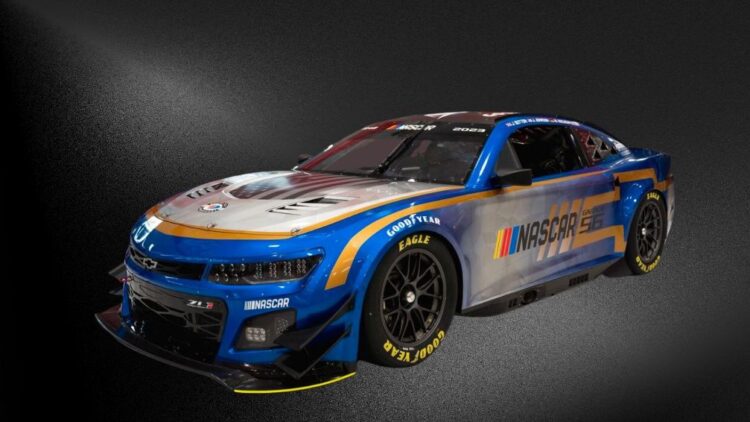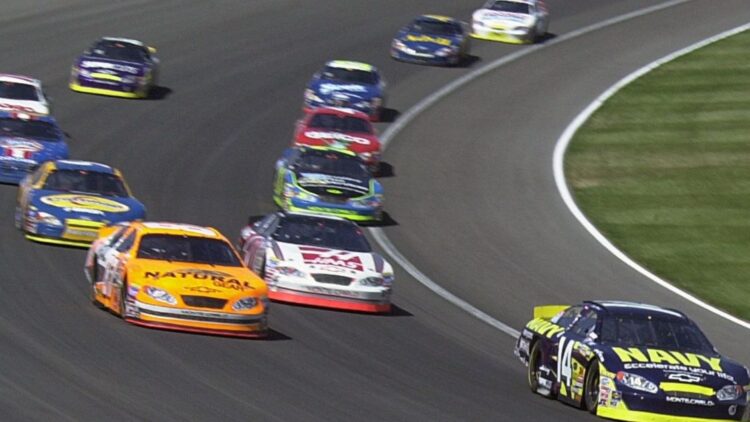
OBJECTIVE OF NASCAR: Be the first car to complete a predetermined number of laps.
NUMBER OF PLAYERS: 40 racers
MATERIALS: Stock car, helmet, racing suit, gloves, shoes
TYPE OF GAME: Sport
AUDIENCE: 16+
OVERVIEW OF NASCAR
NASCAR is an auto racing motorsport that features various types of sports cars racing at very high speeds around a track. Technically, NASCAR is just an American company that sanctions racing events, as the name is an acronym for ‘National Association for Stock Car Auto Racing’. However, NASCAR races have become so popular worldwide that any form of track-based stock car racing is often referred to simply by the name of this association.
As a stock car racing sport, NASCAR’s roots originated on the wrong side of the law. In the 1920s, smugglers would bootleg alcohol (which was illegal under Prohibition) from the western United States and distribute it to other regions of the country. To make this as efficient as possible, as well as to better evade law enforcement, bootleggers would customize their cars so that they’d be extremely fast while still handling very well. Even after the repeal of Prohibition, people continued customizing their vehicles to be faster, although this time with the purpose of pride (and still some illegal activities).
In 1948, an American mechanic named William France Sr. formed NASCAR along with a group of influential races at Daytona Beach, Florida. During this time, Daytona Beach was the preferred spot for people worldwide to attempt to break the land speed record with automobiles. As a result, the first-ever NASCAR-sanctioned auto race was held in Daytona Beach. Nowadays, Daytona Beach is the home of the Daytona 500, which is widely considered the “Superbowl” of NASCAR.
SETUP

EQUIPMENT
- Stock car: A race car designed specifically for NASCAR-sanctioned events. While obviously built to maximize speed, these cars must also adhere to extremely rigorous safety regulations.
- Racing suit: Racers must wear a special fireproof suit to protect them in case of a fiery crash.
- Helmet: Racers wear certified helmets that cover their entire head. These helmets also contain a layer of fireproof material known as “Nomex”.
- Gloves: Racers must wear fireproof gloves.
- Shoes: Racers must also wear fireproof shoes.
COMPETITION/CUP SERIES FORMAT
A NASCAR race features 40 cars racing roughly 200 laps on average, although this number of laps depends on the length of the track. Each race is part of a “series”, which is essentially the equivalent of a regular season in most other sports. NASCAR sanctions a few different series, although the NASCAR Cup Series is considered the highest level of NASCAR racing and is consequently the most popular.
Annually, the NASCAR Cup Series consists of 36 races completed in the span of 10 months. The “regular season” consists of the first 26 races, and the final 10 races are considered the “playoffs”. Only 16 cars make the playoffs, with racers who have won a race immediately getting a playoff spot, while the remaining spots are decided based on point totals accumulated throughout the season (the points leader is also guaranteed a spot).
In the playoffs, every qualified driver is reset to the same amount of points. After every three races, the four drivers with the lowest point totals are eliminated from the playoffs (a win is an automatic advancement to the next round). In the tenth and final playoff race, only four cars remain, with the winner being decided based on which car is the first to cross the finish line.
It should be clarified that for all 36 races in the Cup Series, all 40 cars race at the same time—including in the final four championship race. The cars eliminated in or before the playoffs simply compete for higher placement in the final standings, which will earn them more prize money.
GAMEPLAY

SCORING
NASCAR Cup Series races are broken up into three “stages”. Each stage consists of a certain number of laps, with the top ten drivers at the end of the first two stages earning between 1 to 10 points (first place gets 10 points, second gets 9 points, etc.). The last stage of the race awards the most points, with the winner receiving 40 points, and then every other driver receiving one less point than the driver above them, starting with 35 points for the driver in second place. The drivers in 36th to 40th place receive only a single point each. This stage-based scoring system incentivizes drivers to take risks and be competitive throughout the entire race, not just the final few laps.
PLAYOFFS SCORING
In the playoffs, all 16 drivers who qualified have their point totals equalized to 2,000. However, drivers then also receive some points based on their regular season performance as follows:
- 1st – 15 points
- 2nd – 10 points
- 3rd – 8 points
- 4th – 7 points
- 5th – 6 points
- 6th – 5 points
- 7th – 4 points
- 8th – 3 points
- 9th – 2 points
- 10th – 1 points
- 11th to 16th – 0 points
Additionally, drivers are awarded five playoff points for each regular season win, while stage wins are worth one playoff point each.
During each round of the playoffs, the driver who wins a race automatically advances to the next round. The remaining spots in the next round are determined based on point totals, which are accumulated like in the regular season. The four drivers with the lowest point totals at the end of each round (every three races) are eliminated and have their points reset to 2,000 points plus any points they accumulated in the playoffs.
In each progressing round, all drivers left in the playoffs have their point totals reset to the next highest 1000-point increment. For example, the drivers in the round of 12 (the second round of the playoffs) are all reset to 3,000 points, those in the round of 8 are given 4,000 points, and those in the final four all begin the championship race with 5,000 points.
While the final four keep their 5,000 points after the championship, all of the other drivers in the playoffs have their point totals reset to 2,000 plus all of the normal points they accumulated from those playoff races. As a result, the final four drivers are guaranteed a first-, second-, third-, or fourth-place season finish, while the other playoff drivers compete for fifth through sixteenth regardless of which round they made it to.
CHAMPIONSHIP RACE/FINAL FOUR
In the championship race, the driver in the final four, who finishes the race faster than the other three finalists, is crowned the champion. Keep in mind that there are 40 total cars in every single race—this means that the champion doesn’t have to finish the race in first place to win the series, as long as they beat the other three finalists they win.
Additionally, no stage points are awarded during the final race for the finalists, with their finishing point totals being based solely on their finishing spot (ensuring that their final placement in the race is also their final placement in the final four standings).
For clarification purposes, it must be noted that in all of the playoff rounds, drivers are awarded points based on their finishes – just like in the regular season. This means that a driver in the playoffs who finishes third will only receive the usual 34 points, even if the two drivers who finished above them weren’t even in the playoffs.
Ready to watch a NASCAR game? Check out the 2023 Daytona 500 highlights from Daytona International Speedway to see exactly how exciting this sport can be!
2023 Daytona 500 Highlights | NASCAR on FOX
END OF GAME
The driver who makes it to the final four championship round and finishes before the other three finalists wins the NASCAR Cup Series!
- 30 GAMES TO PLAY OVER TEXT - April 22, 2024
- 20+ FREE PRINTABLE BABY SHOWER GAMES - April 16, 2024
- 20+ College Party Games for the Best Night Ever! - April 2, 2024